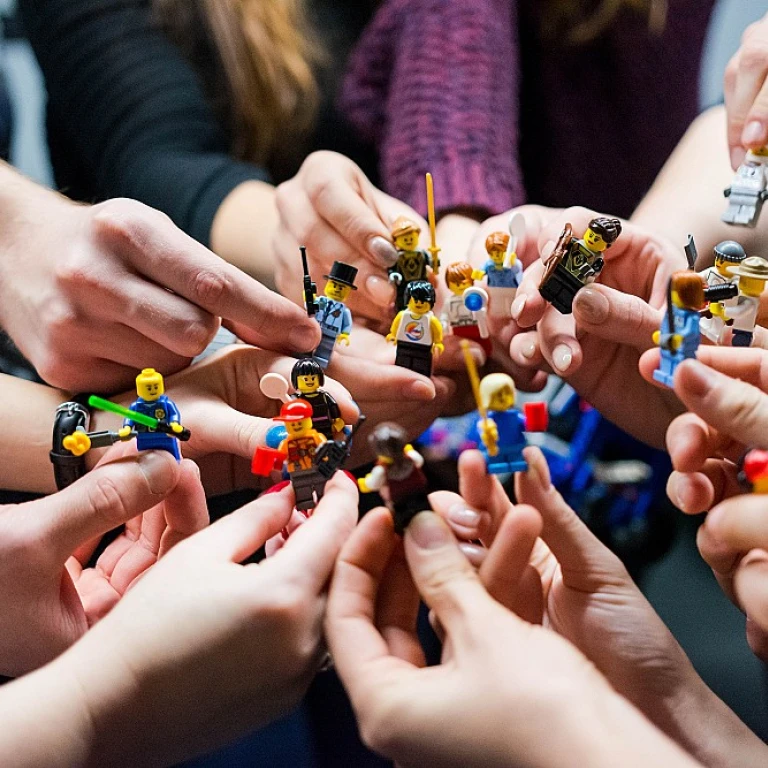
Understanding the Skills Gap
Recognizing the Importance of the Skills Gap
The modern job market is evolving at an unprecedented rate, yet there's a persistent disconnect between the skills students acquire through traditional academic programs and the requirements of employers. This imbalance, commonly referred to as the "skills gap," has become a pressing concern for educational institutions, industry leaders, and students alike. Technological advances and the fast-paced business environment necessitate a workforce well-versed in cutting-edge skills. However, many students find themselves unprepared as they graduate, primarily due to outdated course content that doesn’t align with current industry demands. The skills gap not only affects individual student success and career development but also poses challenges to broader economic growth. Educational programs in colleges, whether they focus on business administration or health education, are now under pressure to adapt. This is where innovative approaches, such as the use of Peer Academic Leaders (PALs), become pivotal. These PAL programs can be instrumental in bridging the gap by providing tailored academic support to students throughout their semester, fostering a culture of peer learning, and enhancing leadership skills through direct campus involvement. In this context, initiatives that feature leaders peer in academic settings provide an avenue for students to gain practical experience and skills that are aligned with their chosen major. For example, Pals serve as a bridge by complementing traditional class teaching with on-campus peer academic support. As these leaders engage with their community, they help students secure the competencies necessary to meet ever-evolving industry standards.Who Are Peer Academic Leaders?
Delving into the Role of Peer Academic Leaders
In the realm of academia, Peer Academic Leaders (PALs) step forward as pivotal figures within the student community. These individuals, often students themselves, take on a leadership mantle to foster academic support and growth among their peers. But what exactly makes someone a PAL, and how do they contribute to bridging the skills gap? PALs are typically upper-year students who possess a thorough grasp of their major and have already navigated through the initial challenges of college coursework. Their firsthand experience with both academic content and the campus environment positions them as valuable resources for new students. They serve as accessible role models who not only understand course content but can also offer insights into effective study habits and exam preparation strategies.Roles and Responsibilities of Peer Academic Leaders
- Mentorship and Guidance: PALs offer mentorship to help students adjust academically and socially, enhancing their campus involvement.
- Academic Support: They provide academic support by hosting study sessions, clarifying difficult concepts, and offering guidance on assignments.
- Leadership Development: Serving as a PAL sharpens one's leadership skills, a crucial component in any field, be it business administration or health education.
- Community Building: By creating a sense of community and belonging, PALs support academic success and encourage participation in college activities.
The Impact of Peer Academic Leaders on Skill Development
The Role of Peer Academic Interaction in Closing the Skills Gap
The growing concern about the skills gap makes it crucial to explore effective solutions, one of which is the role played by Peer Academic Leaders (PALs) on college campuses. These leaders act as invaluable resources in skill development by engaging in academic support and community building with fellow students.
Peer Academic Leaders contribute significantly to student success by enhancing the peer learning experience. Through strategic support during their respective courses, PALs offer assistance at critical moments in a student's academic journey. Their involvement can lead to improved class performance and a deeper understanding of the course content.
PALS serve as academic leaders who have developed strong leadership skills over their academic careers. They guide students through their classes, offering help and sharing effective study habits. This form of peer mentoring helps bridge the gap between taught theoretical knowledge and practical applications. For instance, students in business administration or health education can learn from PALs who have already navigated these major courses successfully.
Moreover, Peer Academic Leaders bolster community development on campus by facilitating connections among students. This inclusive environment promotes open dialogue and collaborative problem-solving, essential aspects of learning. When students meet peer leaders, they gain mentors who understand their academic struggles and can provide tailored, empathetic support.
Another aspect where PALs excel is integrating real-world skills within academic settings. They guide year students in applying theoretical knowledge to practical scenarios. This approach not only improves academic success but also prepares students for future career challenges, thereby narrowing the skills gap.
Experiences within the pal program can shape a student's college journey by emphasizing leadership development and campus involvement. Students who take part in these initiatives report a boost in confidence and a strengthened ability to tackle various academic challenges, contributing to a holistic learning experience.
Strategies for Effective Peer Leadership
Enhancing Peer Leadership Strategies
In any educational setting, peer academic leaders (PALs) play a vital role in helping bridge the skills gap that many students face. By implementing effective strategies, PALs can amplify their influence and provide indispensable academic support to their peers. As part of their mandate, these student leaders employ a variety of tactics and skills honed through experience to uplift their community.Challenges Faced by Peer Academic Leaders
Overcoming Barriers in Peer Academic Leadership
The integration of Peer Academic Leaders (PALs) in bridging the skills gap poses several challenges, hindering the positive impact they could have on student success. When PALs, who often juggle multiple responsibilities, face obstacles, their ability to effectively support their peers and contribute to the overall academic community can be compromised. Firstly, PALs operate within an environment where academic success is paramount. Balancing this with leadership responsibilities requires time management skills, which not all students possess at the outset. This often means that PALs must undergo additional training or workshops, further complicating their schedules, but ultimately leading to development in leadership skills crucial for their future roles beyond college. Moreover, maintaining consistency in the quality of support and guidance provided is another challenge. The variability in training and experience among PALs can result in differing levels of academic support and engagement. Those involved in the PAL program must ensure that leaders across all classes and majors receive consistent training to effectively support their peers. The PALs also face difficulties in addressing diverse learning needs within their student community. With students from various courses like business administration or health education, requiring tailored support, disparities in academic leader expertise can arise. This necessitates additional resources and ongoing training to enhance the PALs’ capability to meet peer needs comprehensively. Furthermore, the physical and social dynamics of campus involvement serve as an obstacle. Creating a harmonious relationship between PALs and their student counterparts requires trust and accessibility, often built through regular and genuine interactions. However, limited peer interactions due to class and semester schedules can restrict the development of these critical relationships. Leaders peer within the PAL framework must also navigate the institutional constraints that might affect the implementation and sustainability of the program. College resources, ranging from financial support to administrative backing, play a significant role in the effectiveness of PALs. Insufficient resources can lead to program inconsistencies, affecting the PALs’ ability to perform their roles effectively. In conclusion, while the challenges faced by Peer Academic Leaders in bridging the skills gap are substantial, addressing these barriers with structured program development, ongoing support, and resource allocation can enhance their impact. By strengthening the PAL program, colleges can ensure that PALs remain a vital component in nurturing academic and leadership success among students on campus.Future of Peer Academic Leadership in Addressing the Skills Gap
The Evolving Landscape of Peer Academic Leadership in Meeting Future Challenges
The role of peer academic leaders (PALs) continues to evolve as the landscape of higher education and the needs of students change over time. With a growing focus on employment readiness and the skills gap, PALs are pivotal in facilitating student success. By providing academic support and fostering a learning community, these leaders are vital in helping to bridge gaps in students’ knowledge and experience.
As college courses and campuses become increasingly diverse, PALs must adapt to changing academic environments and student demographics. In business administration and health education programs, for example, leaders peer with students to integrate practical course content with real-world applications, ensuring that graduates are prepared for the workforce. This hands-on approach to learning requires PALs to have robust leadership skills and the ability to engage in meaningful campus involvement.
The evolution of peer academic leadership also involves embracing technology and digital tools to support learning. With the rise of online learning platforms, PALs can use these technologies to enhance their strategy in academic support, providing innovative and accessible assistance to students across various campuses. This shift not only helps students excel in their coursework but also prepares them for a digital economy.
Long-term success in bridging the skills gap will depend on active collaboration between academic leaders, college administration, and the student community. PAL programs must continue to be adaptive and responsive, continuously assessing their impact on student achievements and adjusting methodologies to meet the ever-changing educational landscape. By maintaining a commitment to student development and embracing change, peer academic leaders can significantly impact the readiness and success of students year after year.












